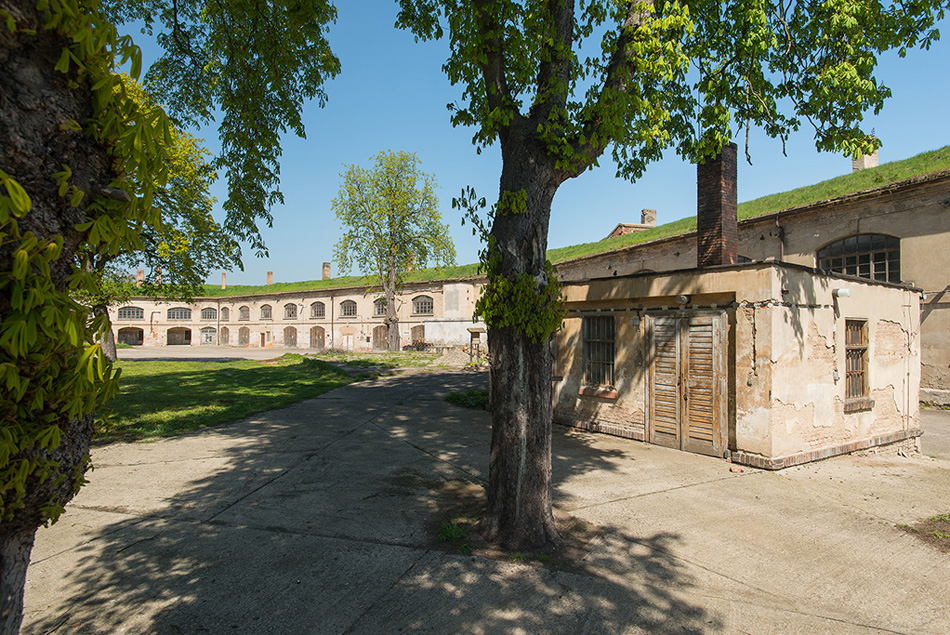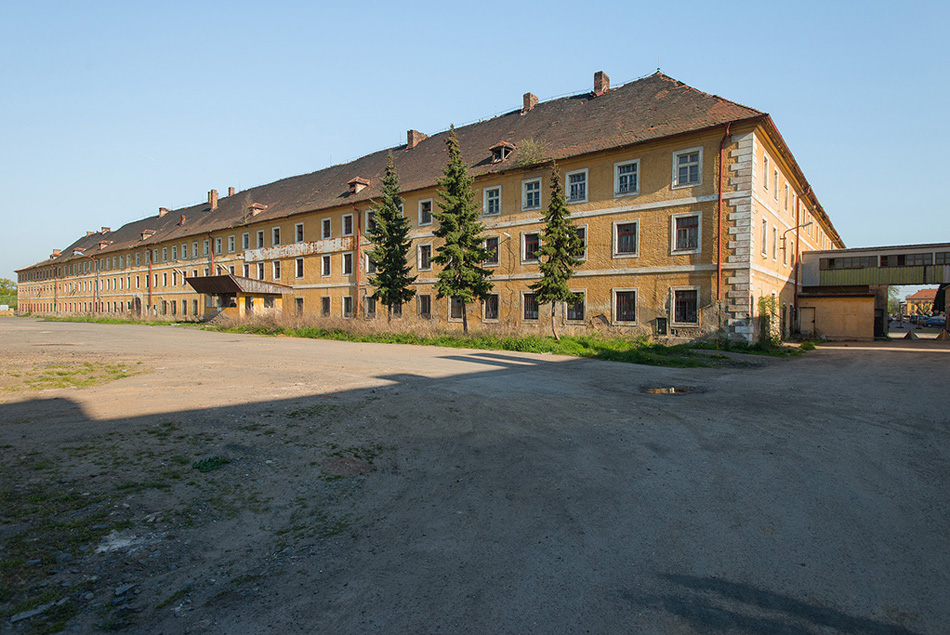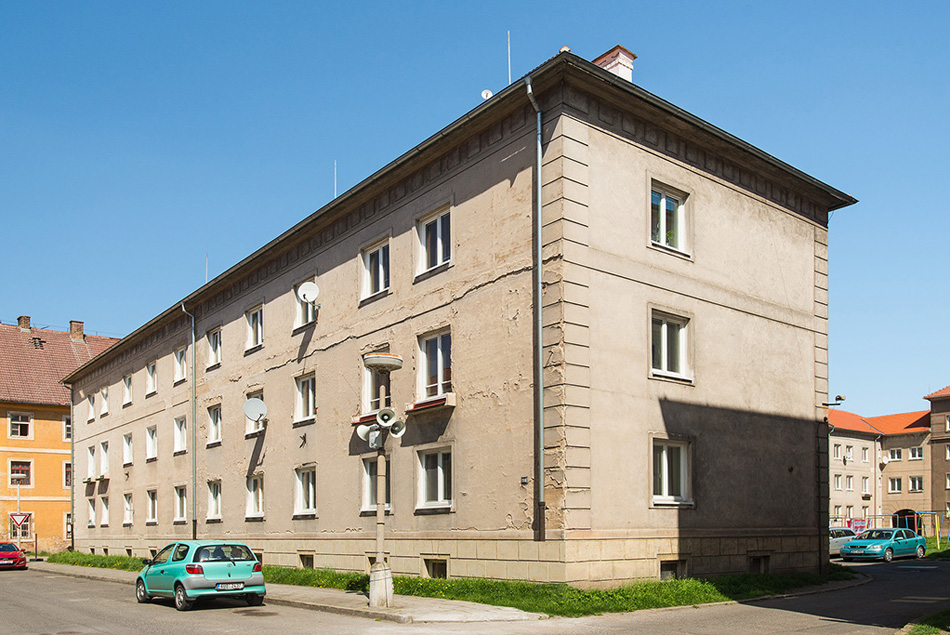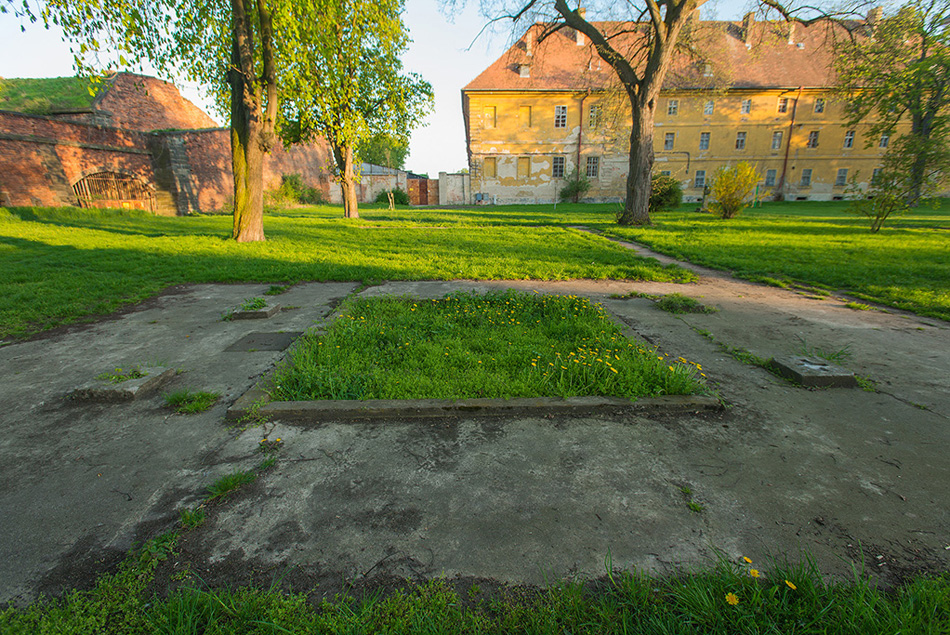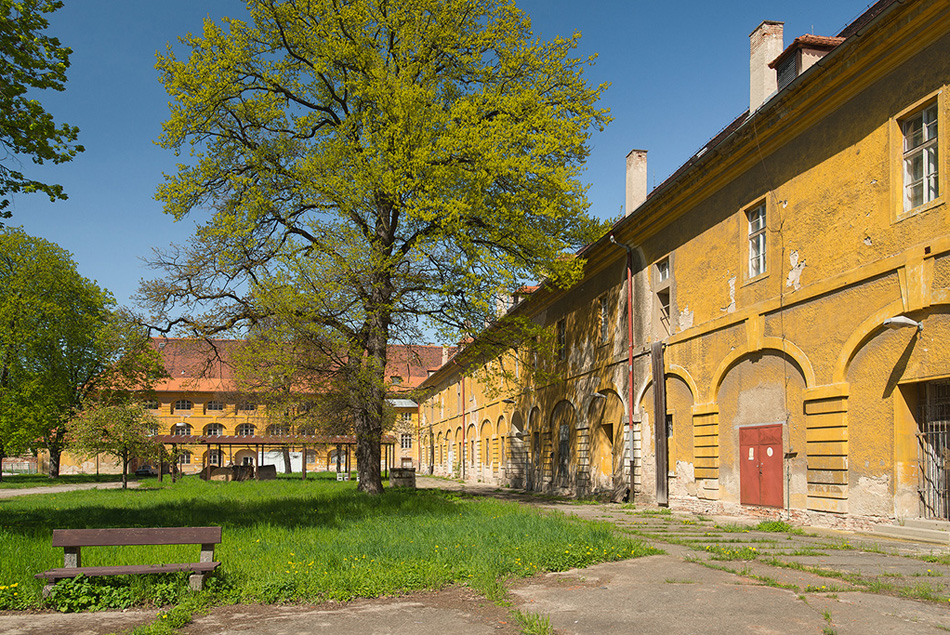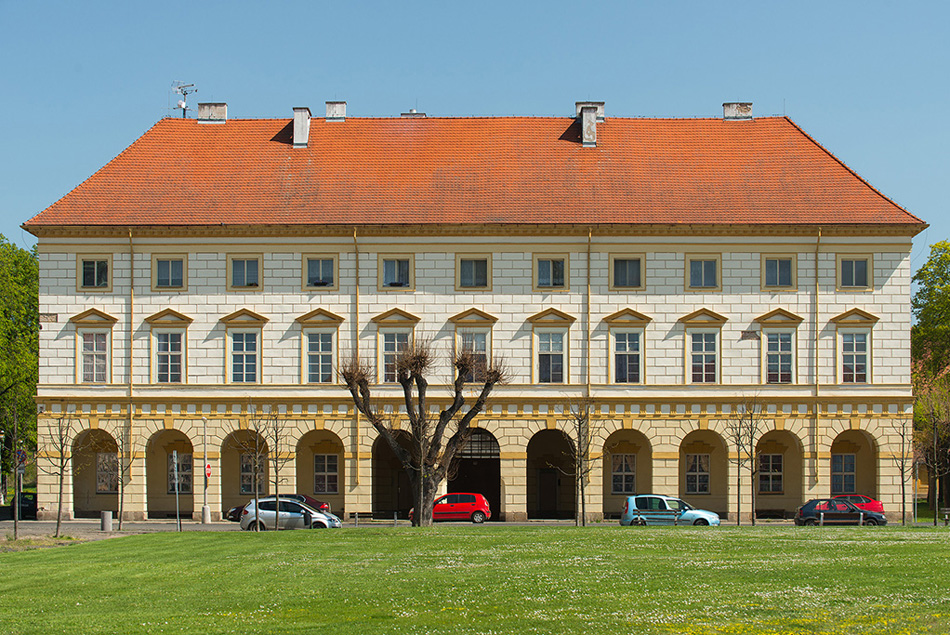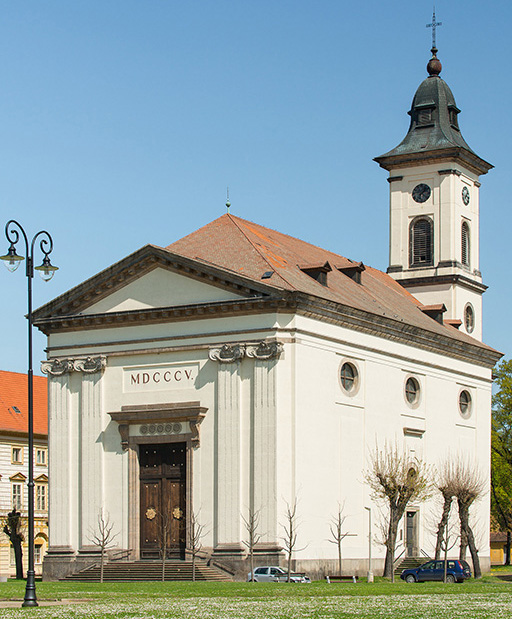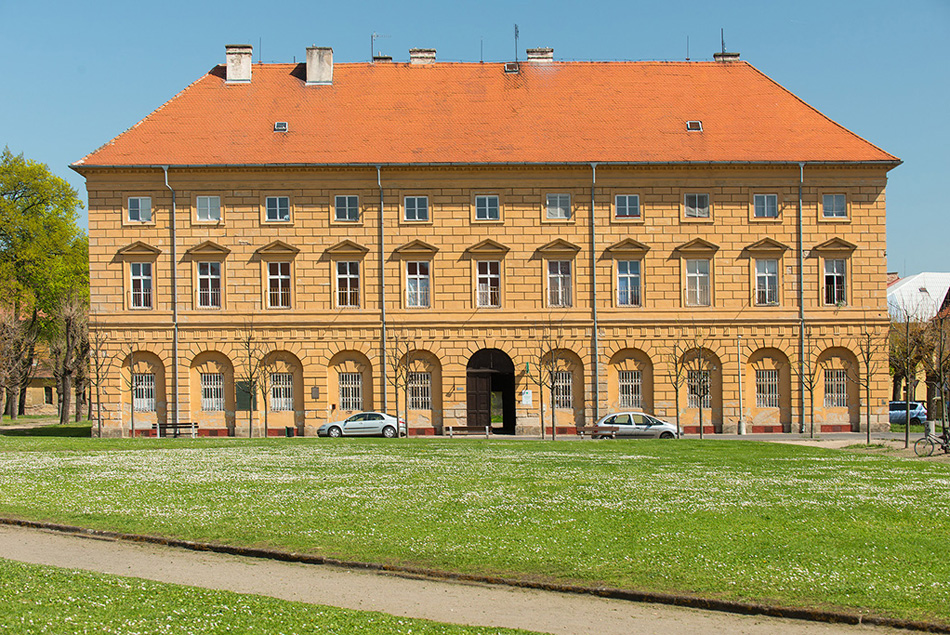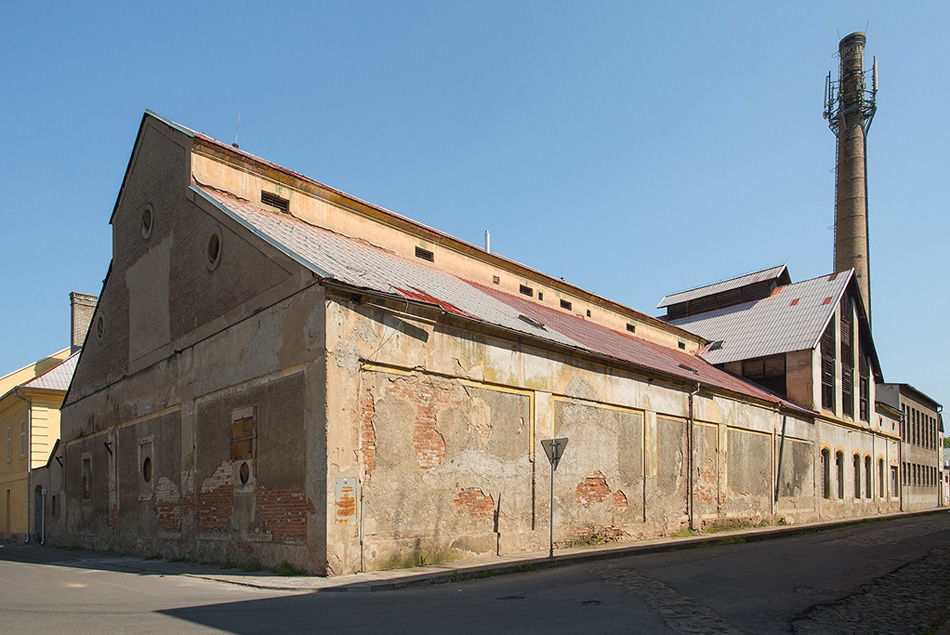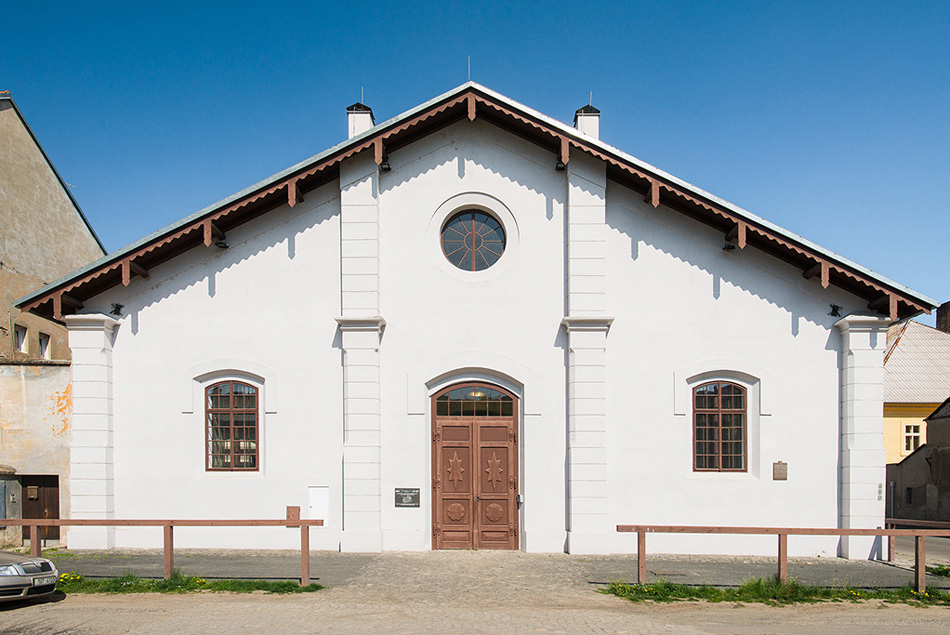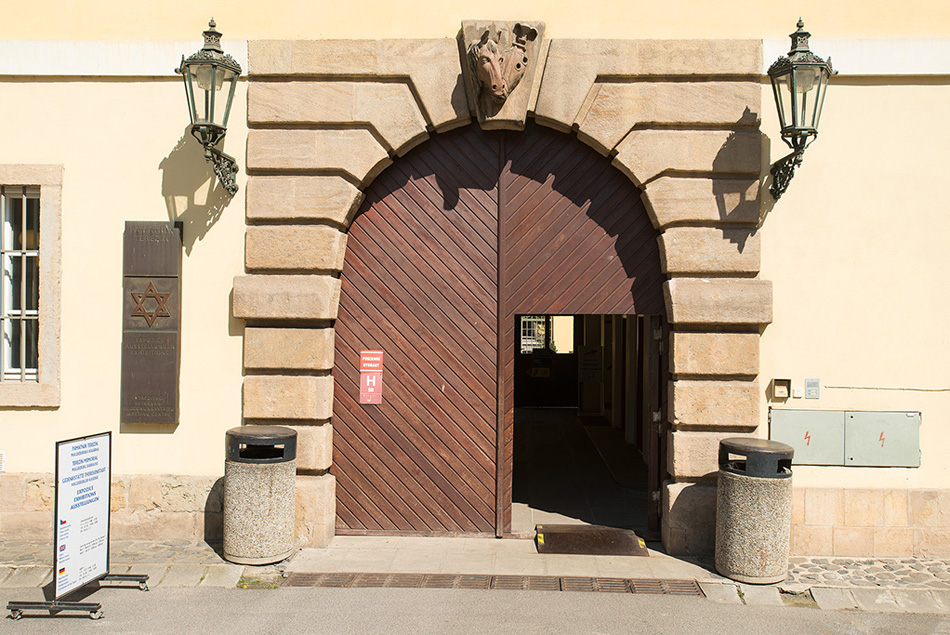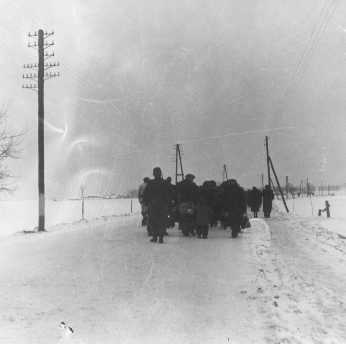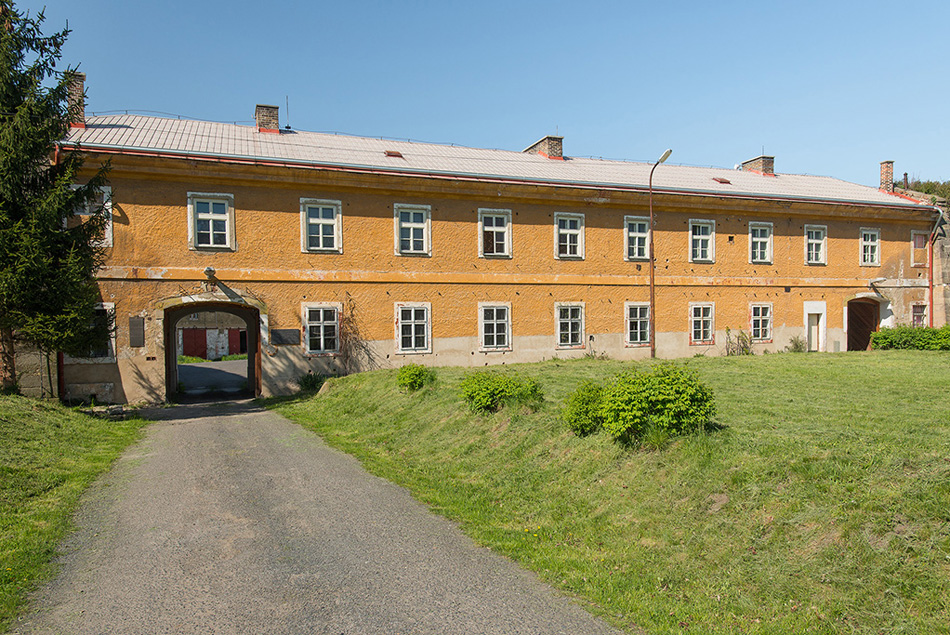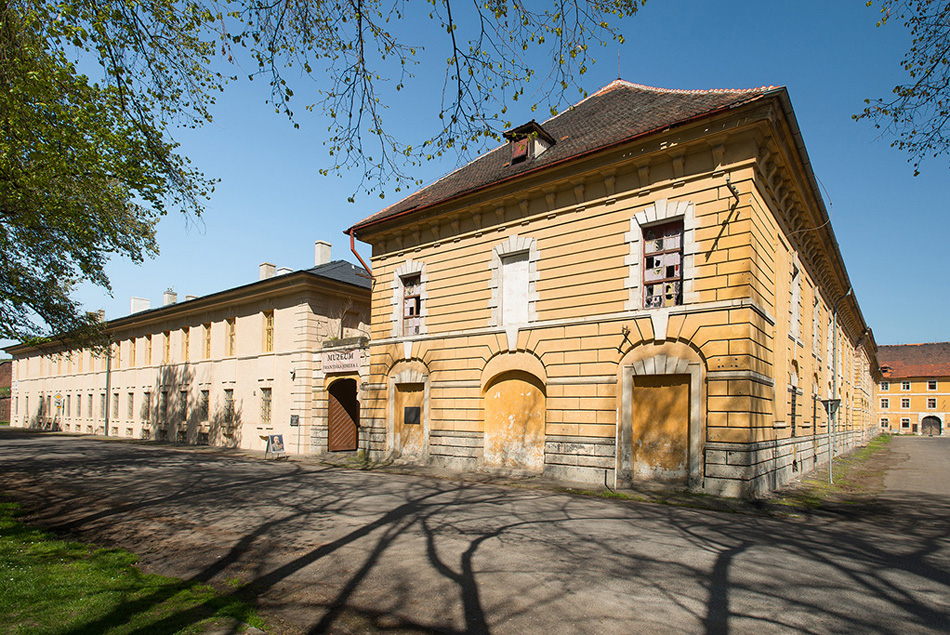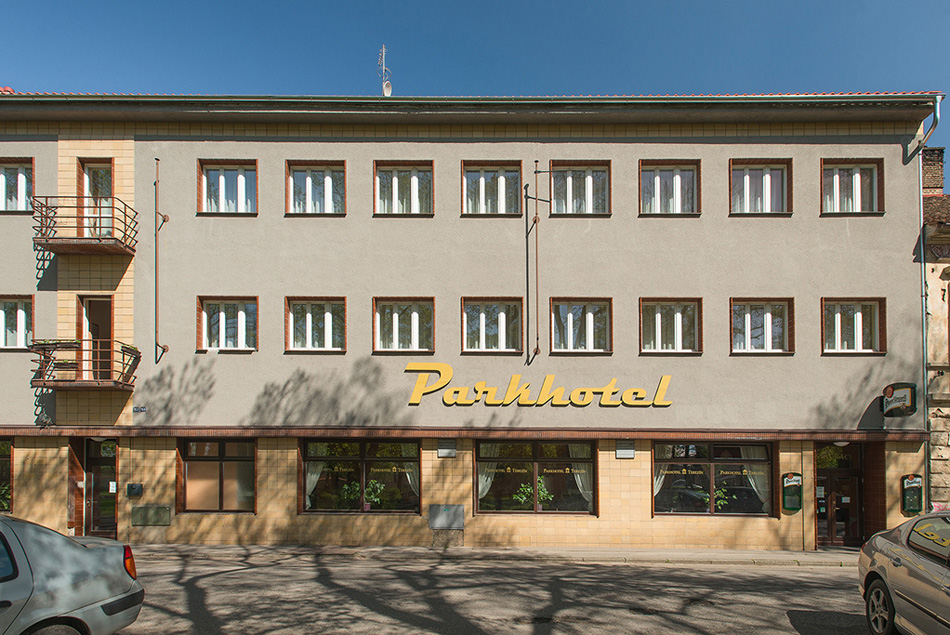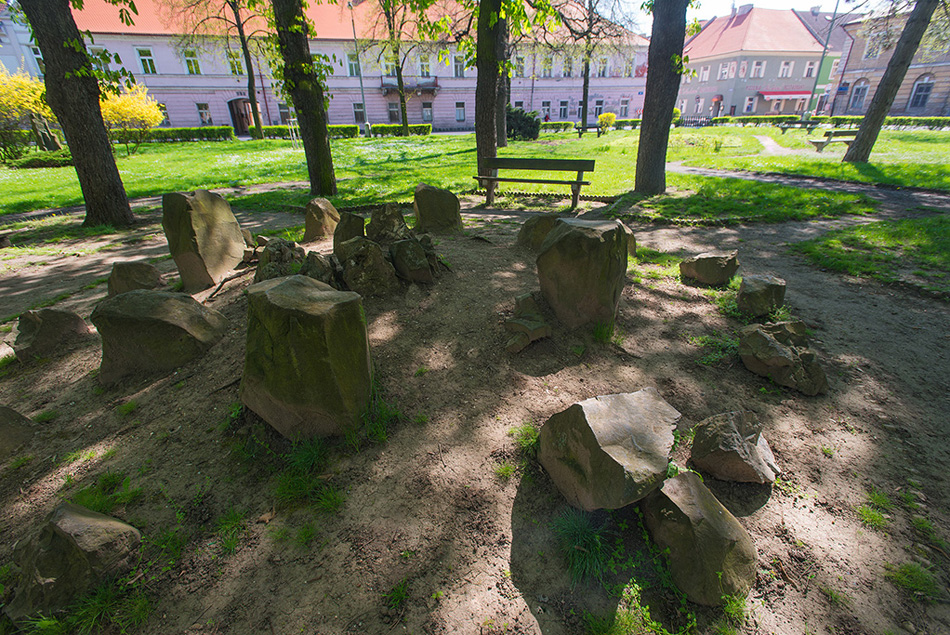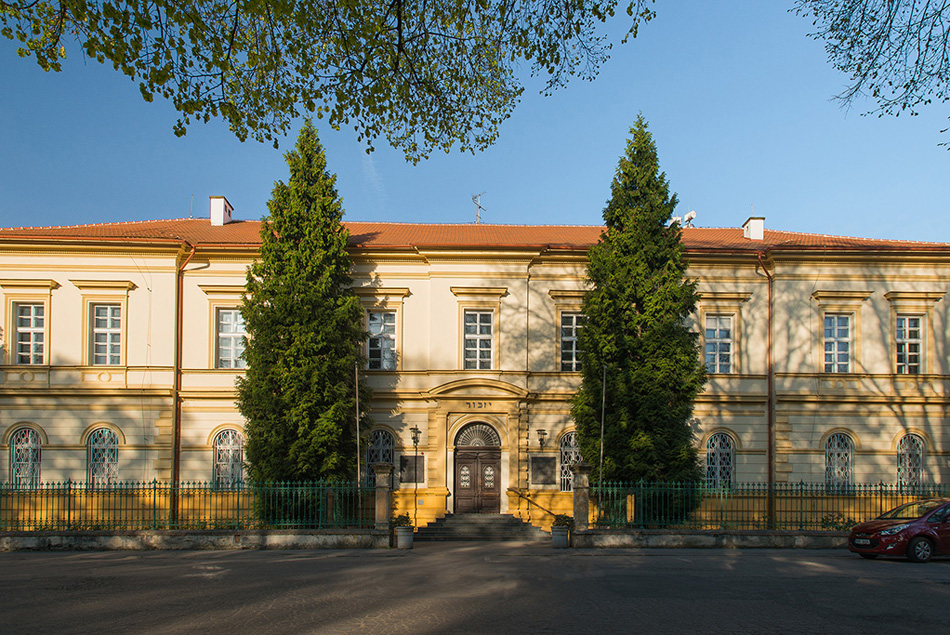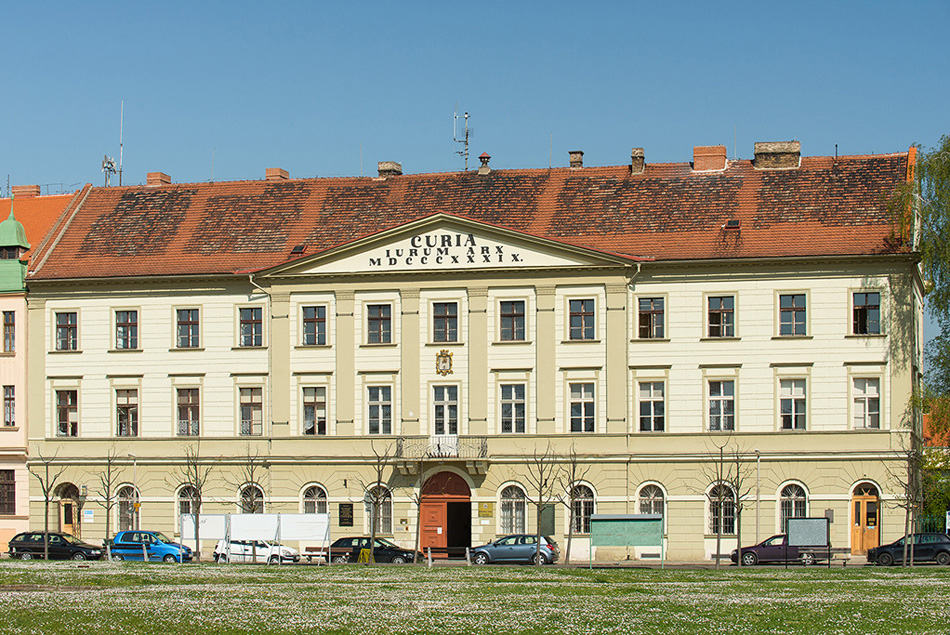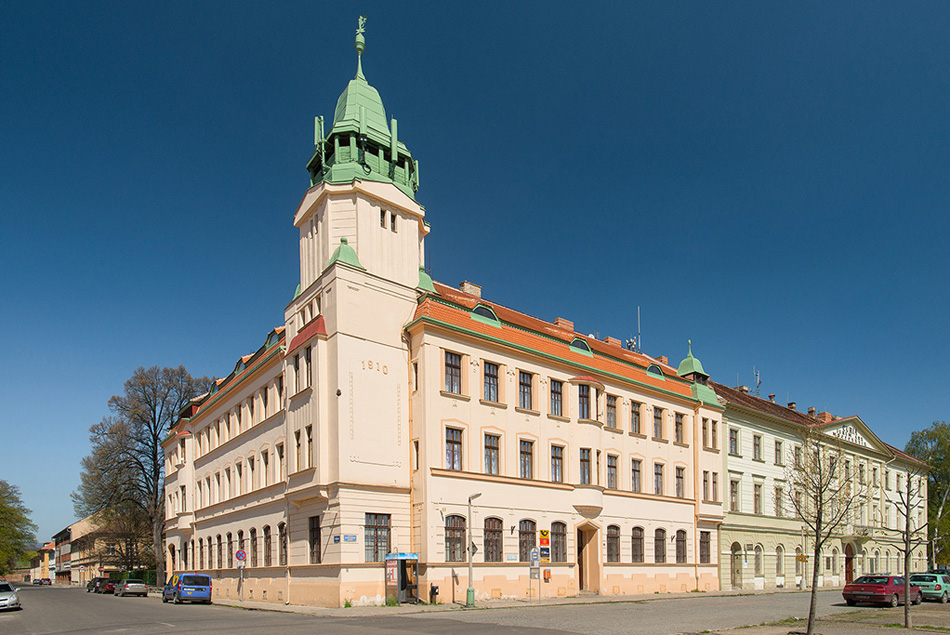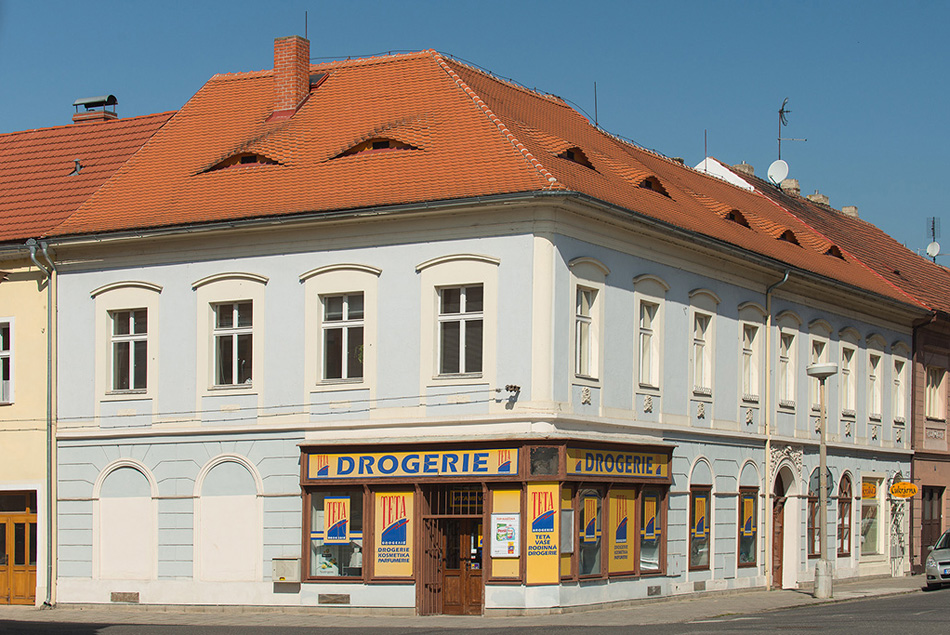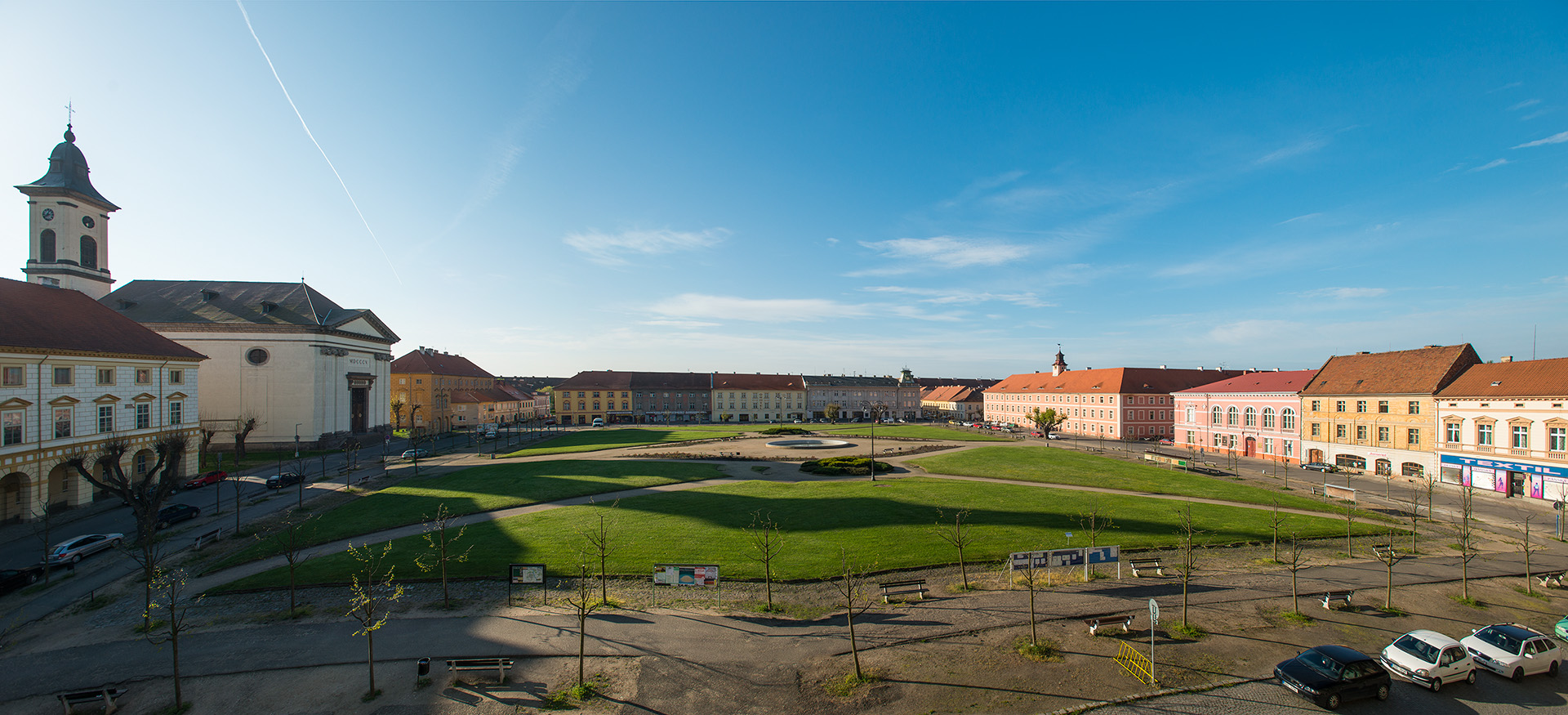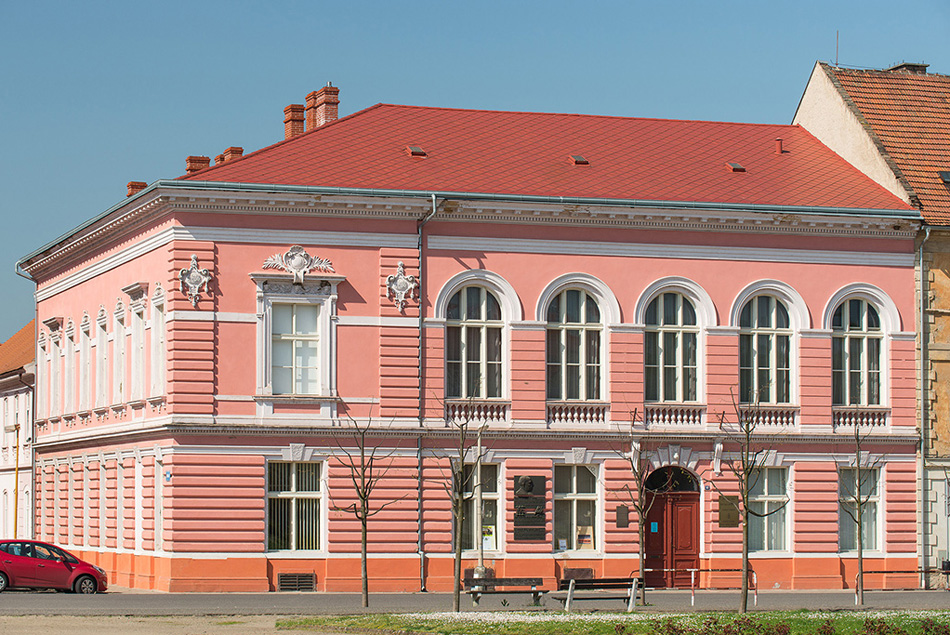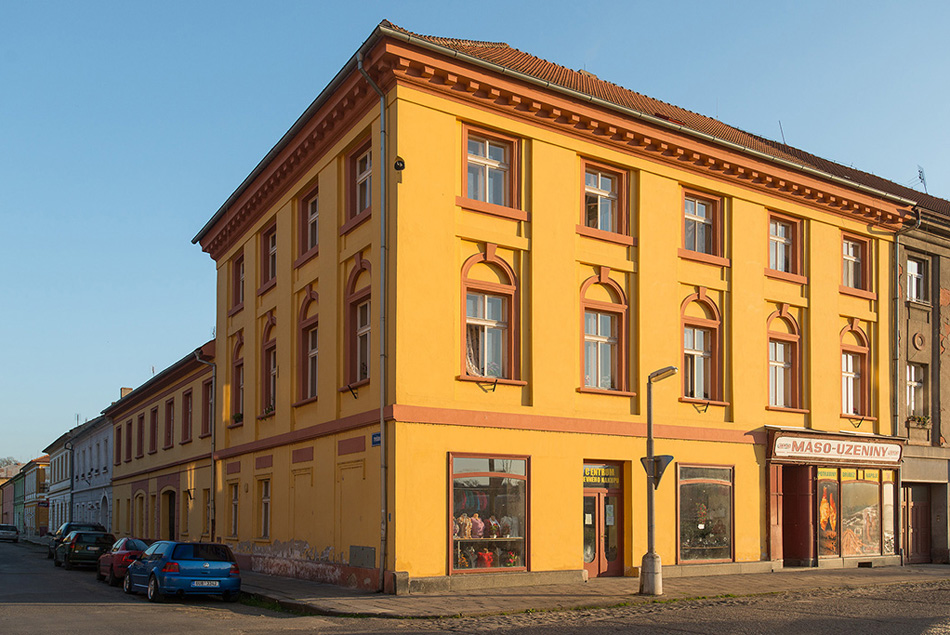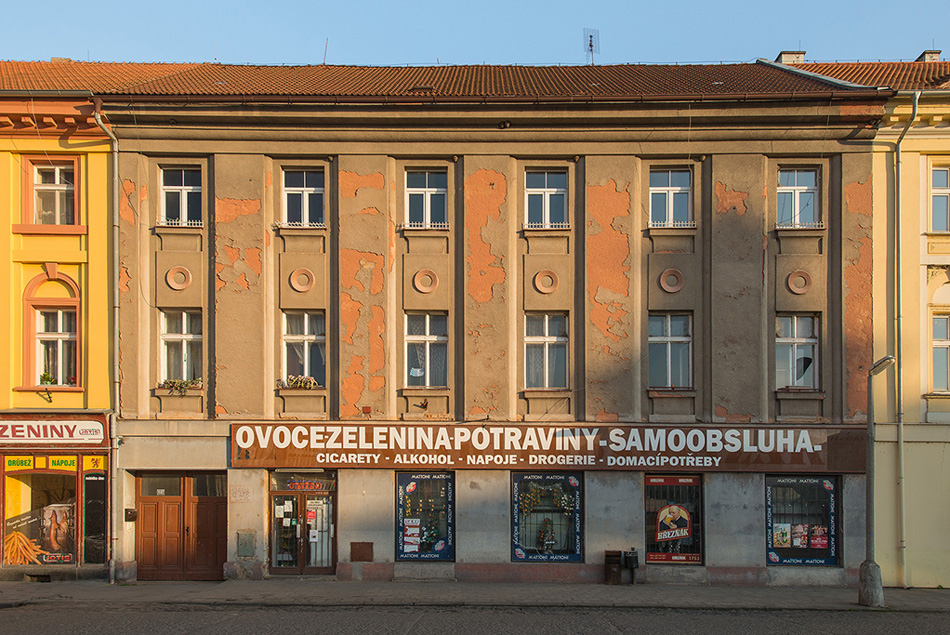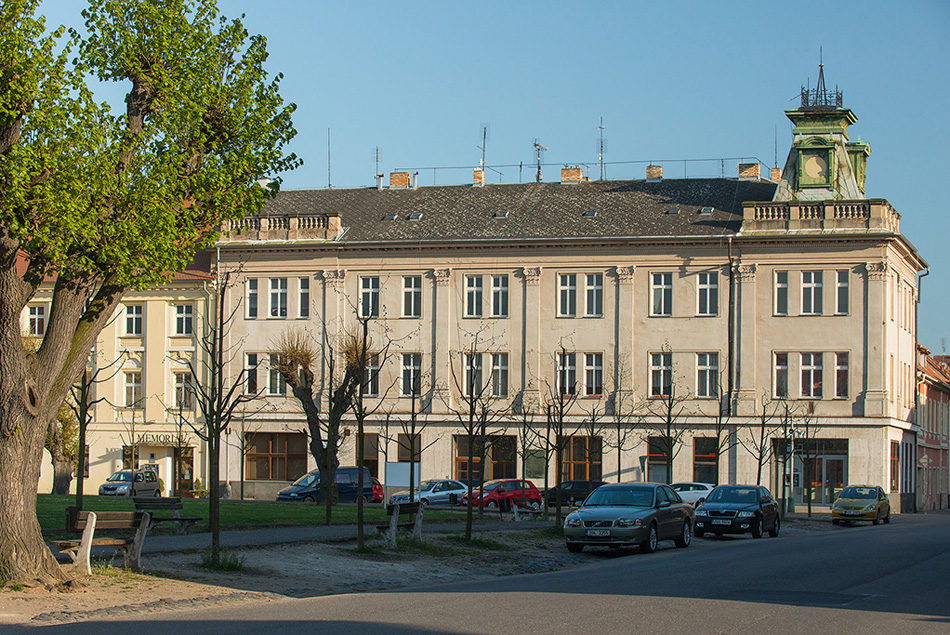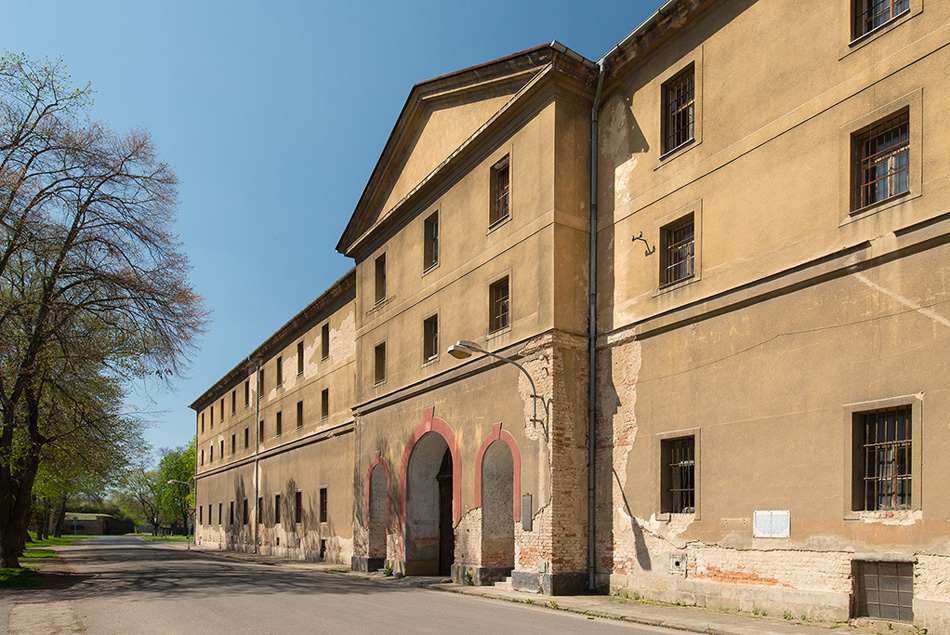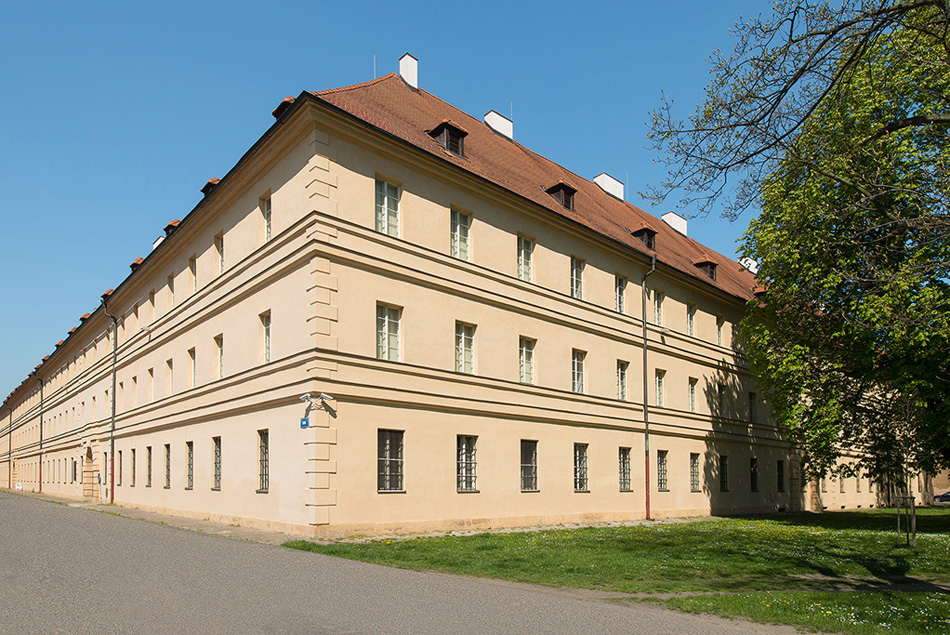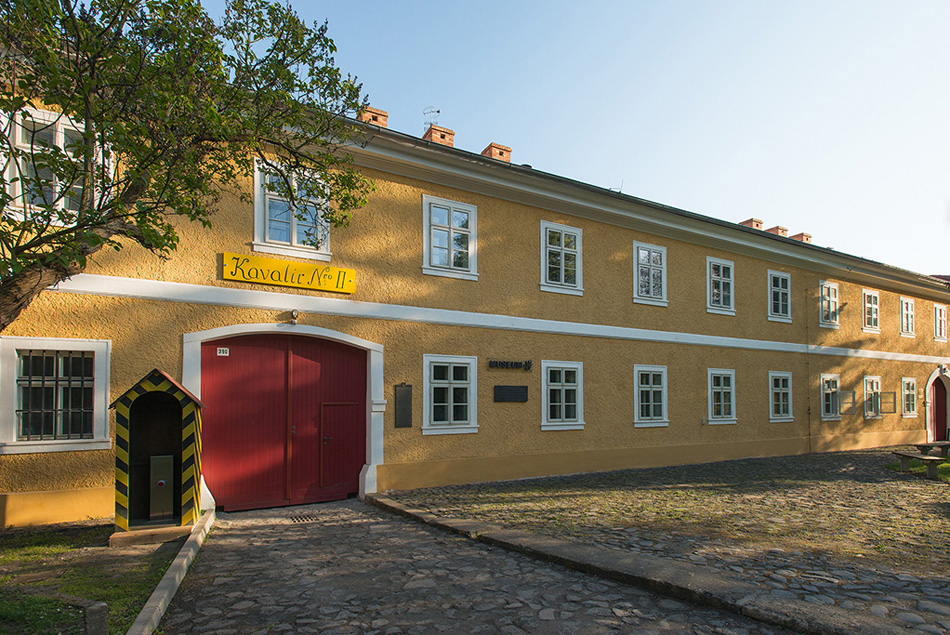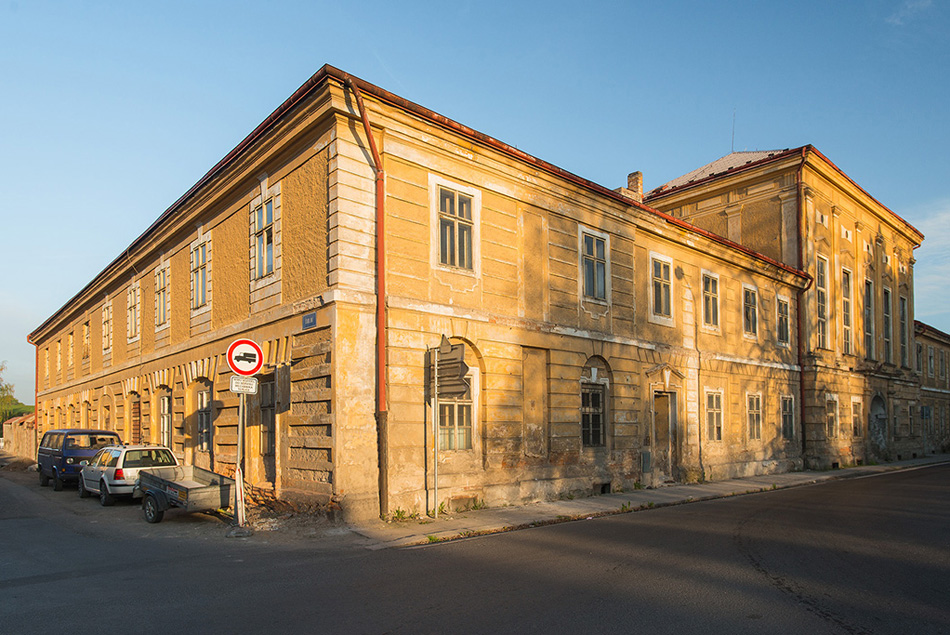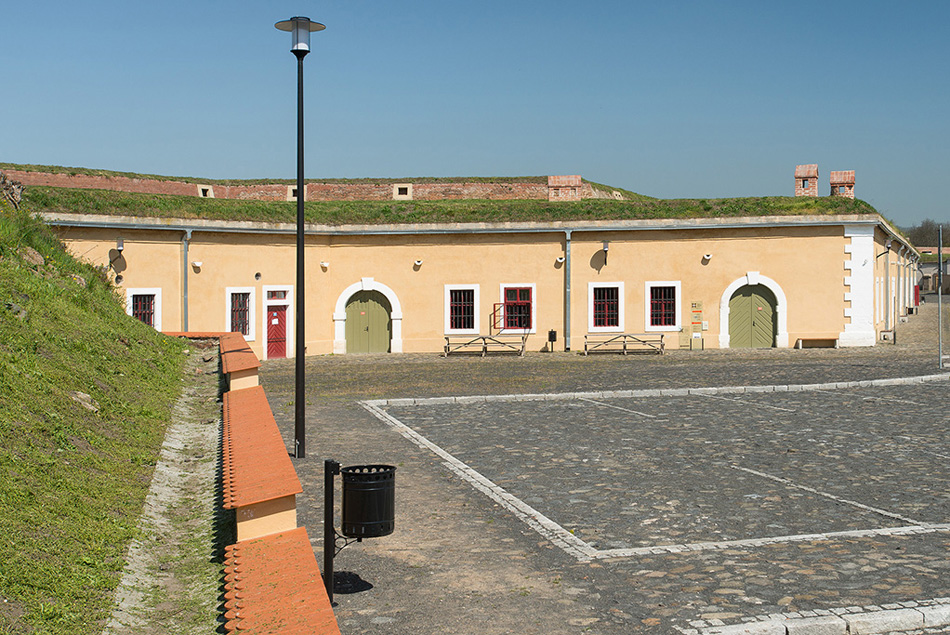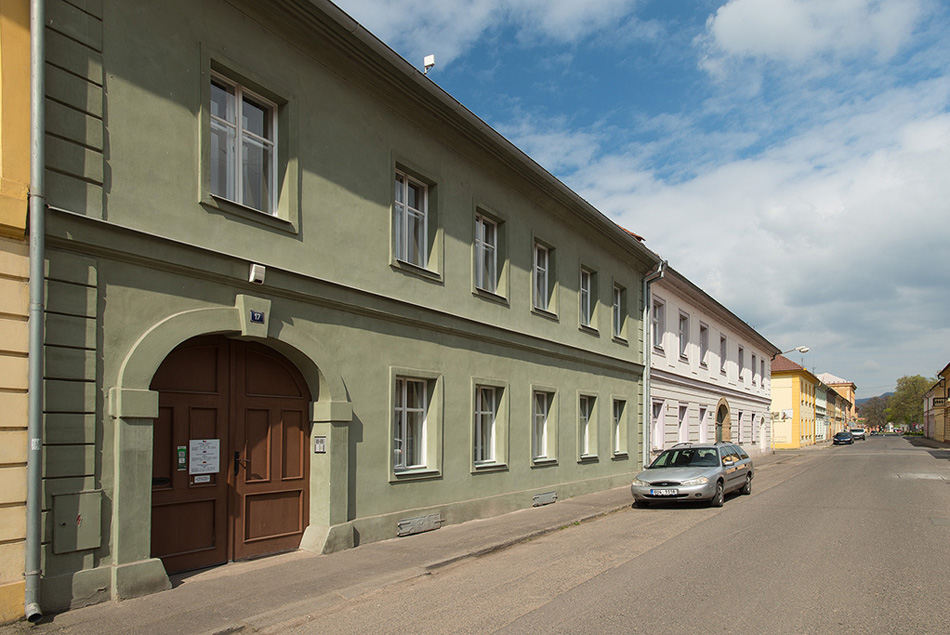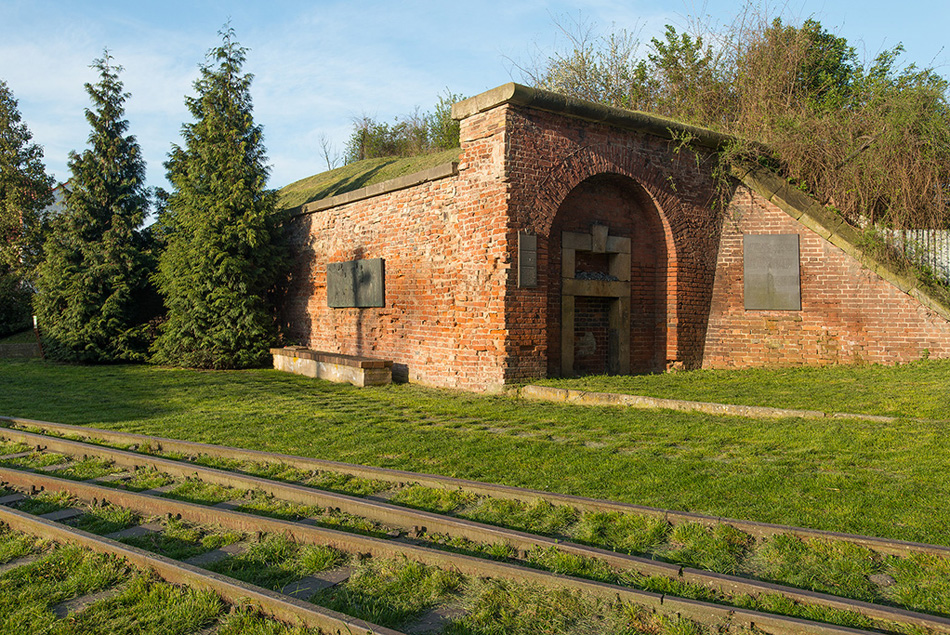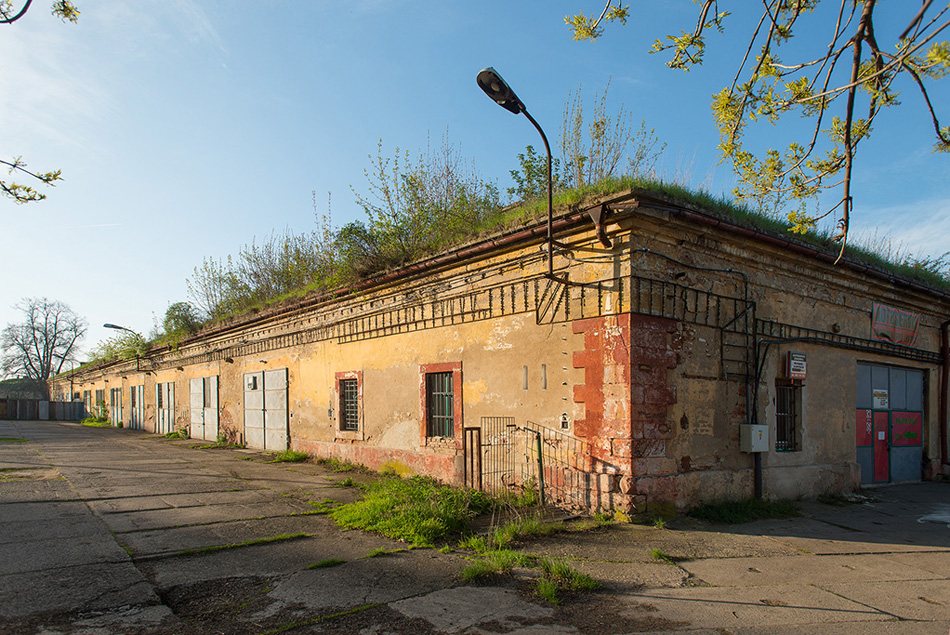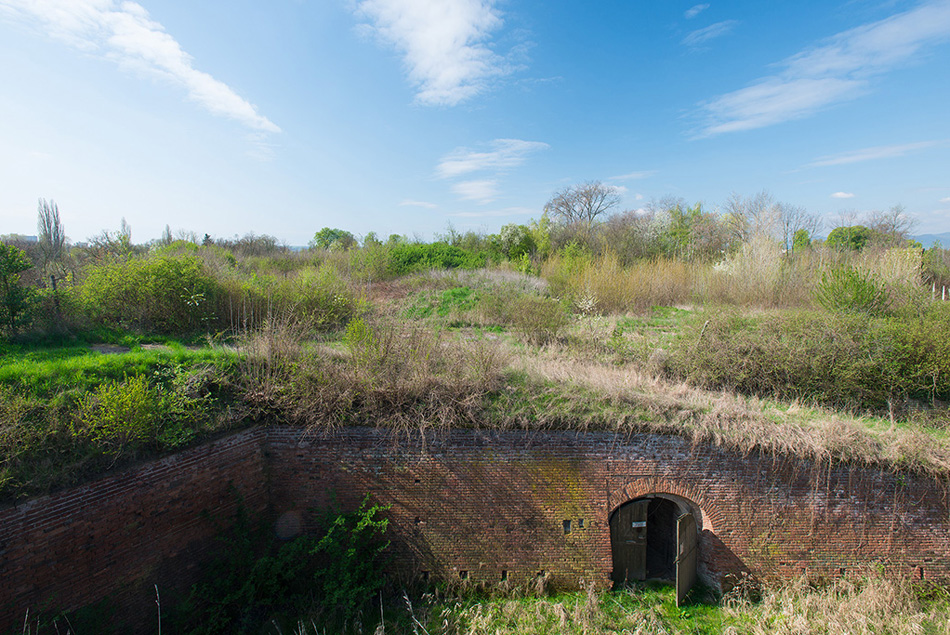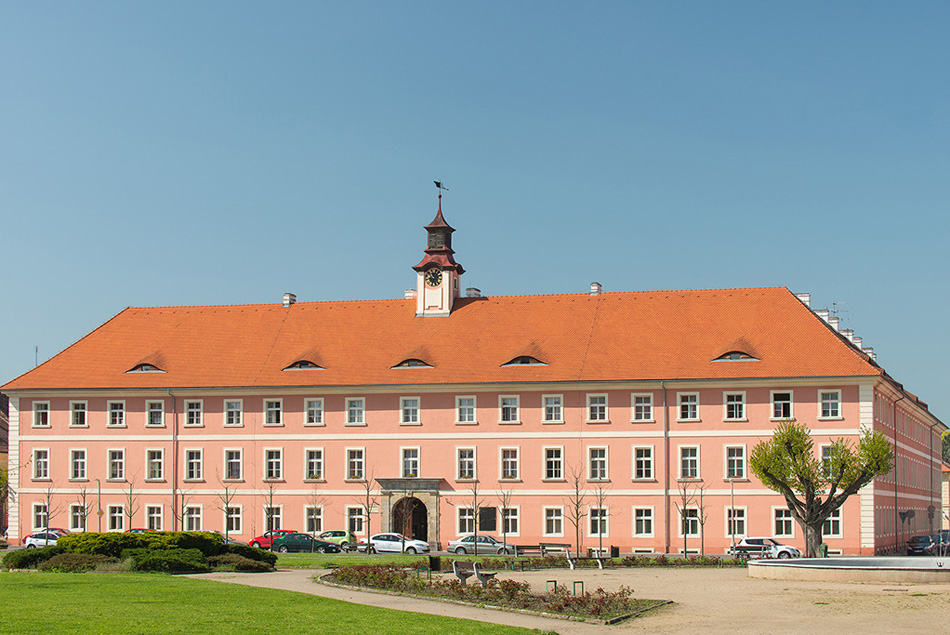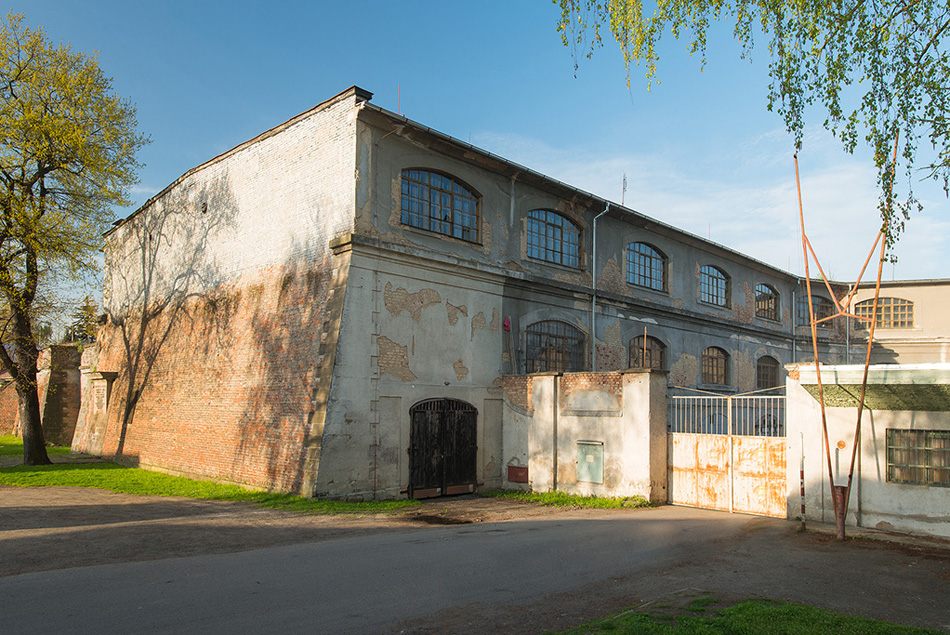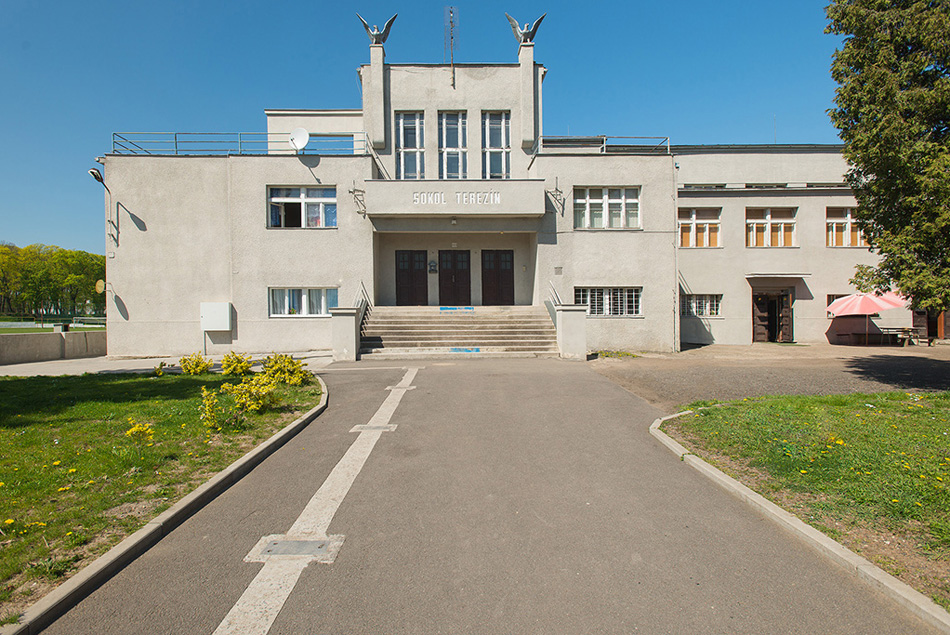|
|
||||||
|
|
|
|
|
|
||
|
|
|
|
|
|
|
|
|
|
|
|
||||
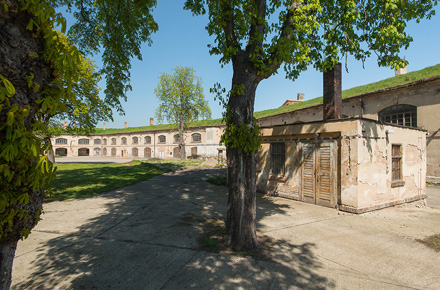
The Kavalir Barracks housed old and mentally ill prisoners who were separated from the rest of the inmates by a high wooden fence.
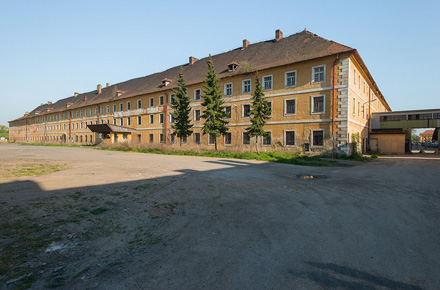
Beginning on December 6, 1941, the Dresden Barracks is where women were housed together with their children. Female prisoners slept on thin mattresses on the floor. In the cellar there were cells for prisoners to be punished. Some of the rooms were used for theater and other cultural performances. The soccer match seen in the propaganda film “The Führer Give a City to the Jews” was filmed in the barracks courtyard.
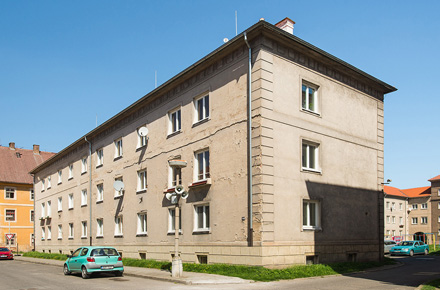
This building was used to house mothers with infants and children under the age of 3. At the end of 1943, it also contained a library and a reading room for more than 100 people.

Prisoners lived here.eeeeeeeee
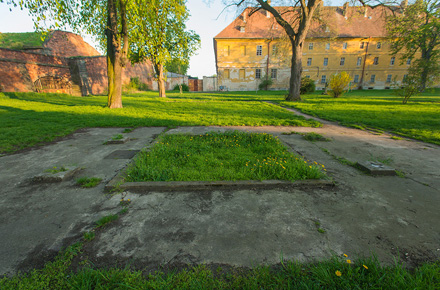
During the “beautification” action in 1944, a children’s pavilion was built on this site. It included a playground, paddling pool and swings. Very few children lived to tell about their experiences. In the ghetto there were more than 10,500 children who had not reached the age of 15. Fewer than 300 survived.
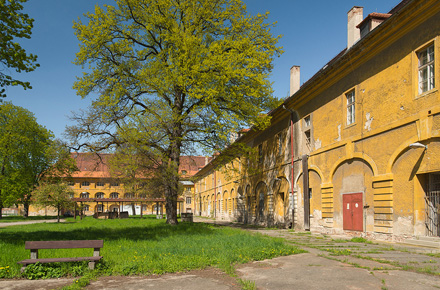
The Hohenelbe Barracks were used as a hospital with a central laboratory. There was also a central bath with a small swimming pool.
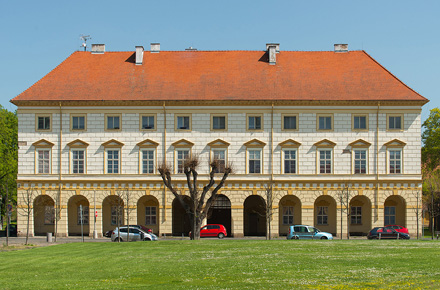
This building was the headquarters of the SS Commandant until 1942. Later a post office and other services were located on the first floor. It also served as a barracks for young girls, ages 16-18, who published a magazine called “BONACO.”
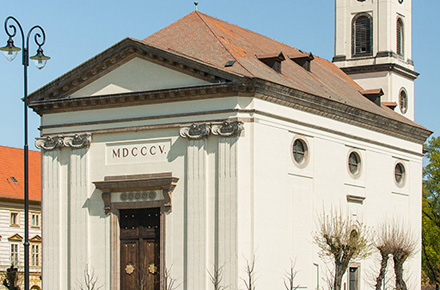
The beautiful Empire church was built during the years of 1805-1810. During the time Terezín was used as a ghetto, the church was closed. Blankets were stored here for a short time, and prisoners had access to the tower to take care of the clock.
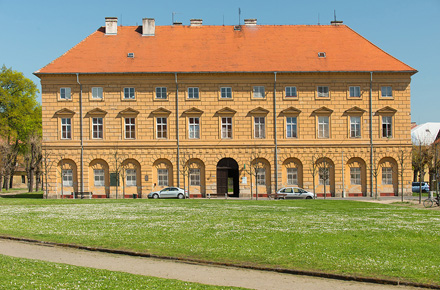
This building was used as a home for girls ages 8-16. Art lessons were given here by Friedl Dicker-Brandeisova. In the cellar, rehearsals were held for Verdi’s Requiem and Smetana’s opera The Bartered Bride. Rafael Schächter, who led many of these rehearsals, was a Romanian conductor, pianist and opera coach of Jewish origin and an organizer of cultural life in Terezín.
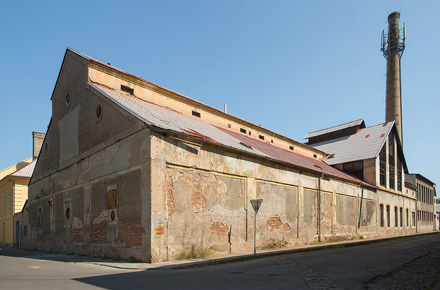
This former brewery was converted into a disinfection station, shower and laundry.
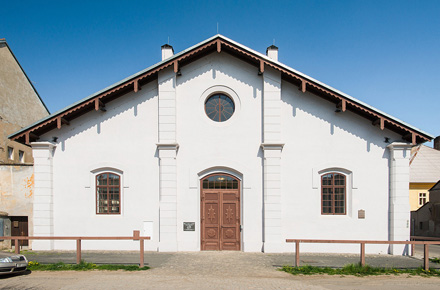
In 1943, a woodworking shop was established in this location. Prisoners made bunks, coffins, urns and other furniture. It is currently used as a riding school as it was before WWII.
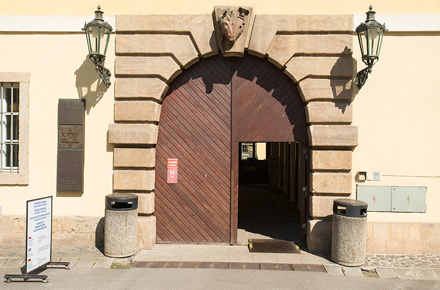
The Magdeburg Barracks housed the Council of the Elders and the offices of the Jewish self-government. It now houses a museum of culture.
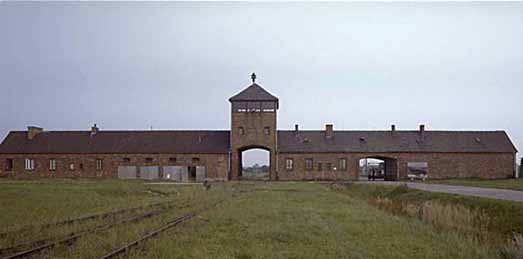
Entrance to Theresienstadt. A transport of Jewish prisoners marches through the snow from the Bauschovitz train station to Theresienstadt. Czechoslovakia, 1942.
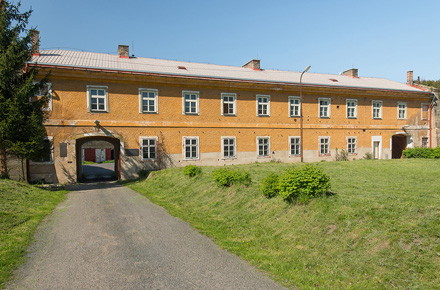
The Aussig Barracks were originally where prisoners were registered on arrival. There was also a central food — and later, clothing — warehouse.
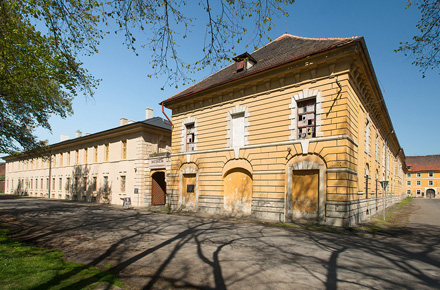
Prisoners were brought to the Bodenbach Barracks upon arrival. They had to go through a “šlojska” or checkpoint. In 1943, the Barracks were used for needs of the RSHA (Reich Security Main Office).
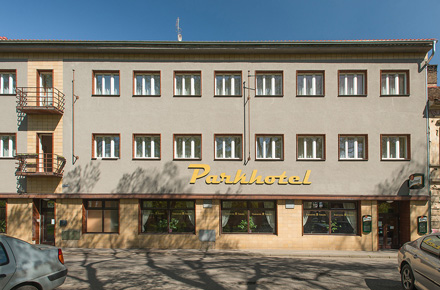
This building is where the SS soldiers lived. There was a dining hall on the ground floor. Today it is a hotel with a restaurant.
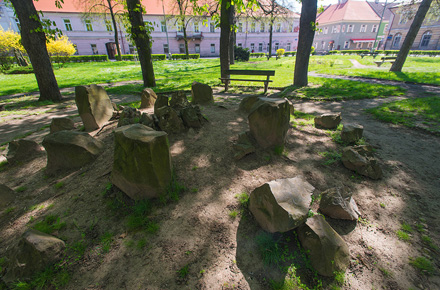
The SS and their families relaxed in Brunnen Park.
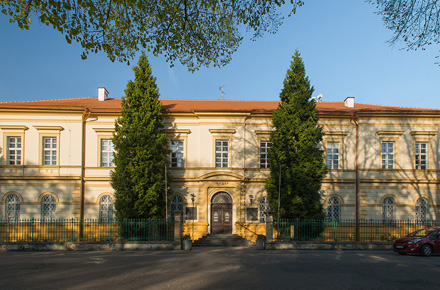
The main focus for tourists is the Museum of the Ghetto. Formerly a school, and during the Nazi years a home for boys ages 10-15, this building now houses displays including original works of art from the ghetto. Additionally, it includes a detailed explanation of the way Terezín was used in 1944 to fool the International Red Cross into condoning the Nazi’s treatment of the Jews. Boys who lived here published their own magazine, “Vedem.”
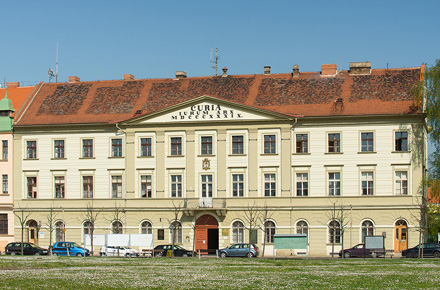
Terezín Town Hall, located here, was used for concerts and performances. This was also the seat of the Ghetto Court and, beginning in 1943, the bank of the Jewish self-government.
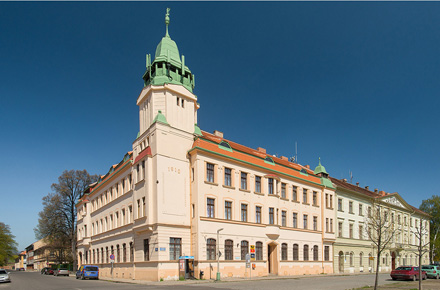
This building was a home for pre-school and early school-age children. There was also a kitchen for the children, a dining room and a small bakery.
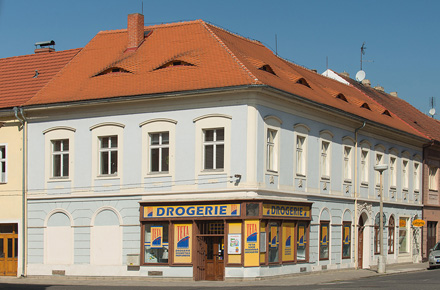
This building was used to house children and apprentices, and also contained an infirmary and an outpatient clinic for youths.
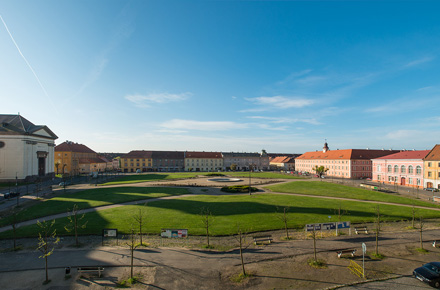
In 1943, Marketplatz was a work area. A large part of the square was used for so-called “K-Production,” where inmates produced crates for the German army. During the “beautification” action in 1944, it was changed into a park with flowers and white benches. A wooden music pavilion was also built in one corner of the square.
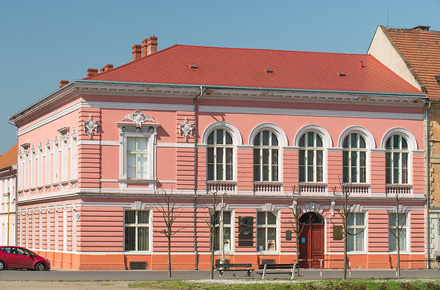
During the time of the ghetto, this building contained a theater where live performances were given. It was also where the ghetto guard was housed. The ghetto guard was a unit of young male inmates organized by the Nazis to keep order in the ghetto. Most of them were eventually sent on transports to the death camps, and were later replaced by 150 men over the age of 45 who made up the new ghetto guard.
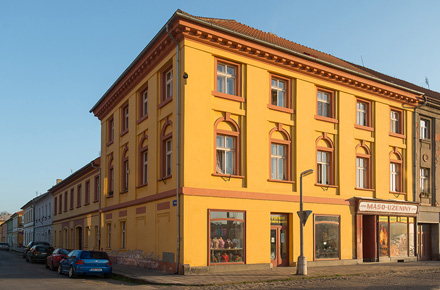
A shop selling underwear and clothing was opened in this location. The items came from the luggage of the prisoners.
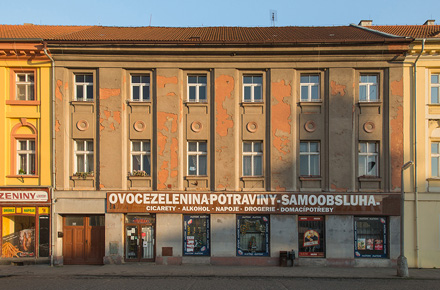
In 1942, a café with approximately 100 seats was opened on this site. “Ersatz” coffee and tea were served, and the Jews could listen to live music or watch cabaret scenes. An entry ticket was valid for 90-minutes.
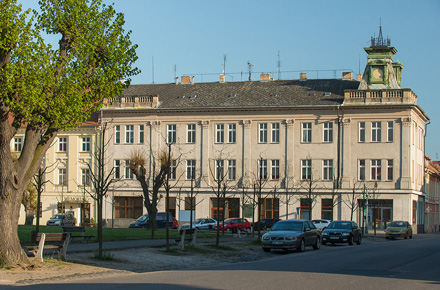
From 1942 on, this was the headquarters of the SS Commandant. In the cellar, the SS built a so-called “bunker” where prisoners who violated camp orders were jailed, tortured and interrogated by the Gestapo.

Prisoners lived here.dsfs
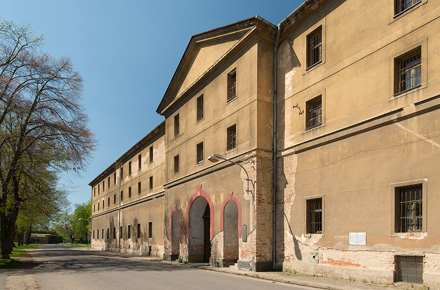
The Hannover Barracks for men also housed one of the large-capacity kitchens. The cellars were used for rehearsals of different musical performances.
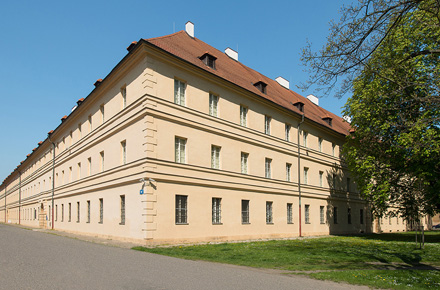
Before June 1943, incoming prisoners had to walk 2 miles from the nearest railroad station. That walk ended here, in front of the Hamburg Barracks, which housed mostly women. Dutch prisoners were also housed here beginning in 1943.

Kleiner Park.
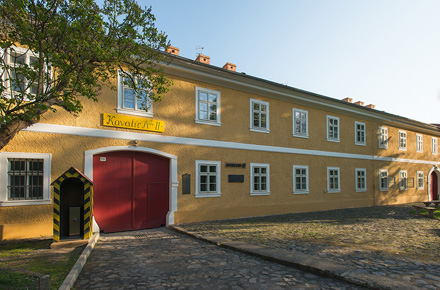
Everyone wanted to work in the bakery because life in Terezín meant going hungry. It was the best place to work for children up to age 14.
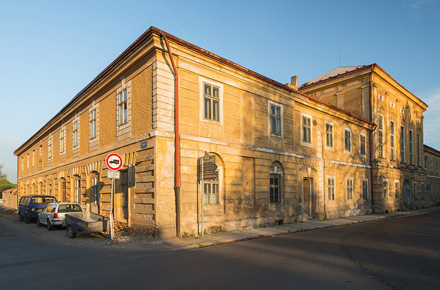
The Theresienstadt ghetto had its own police force. It was special unit of the Protectorate gendarmerie and was housed here. The police guarded the borders of the ghetto and escorted prisoners when they left town to avoid contact with the outside world.
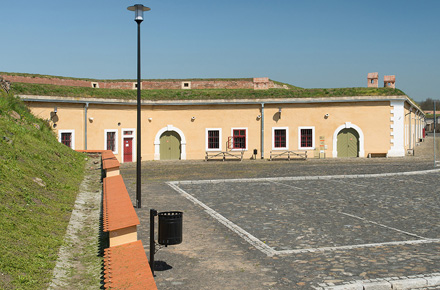
The Bauhoff building was used as craft workshops. A gas chamber was also built near here in 1945, in the corridor of Ravelin XVIII (a ravelin is a V shaped fortification used to protect the entrance of a fort.1), but was never used.
1 From the Oxford Dictionaries online.
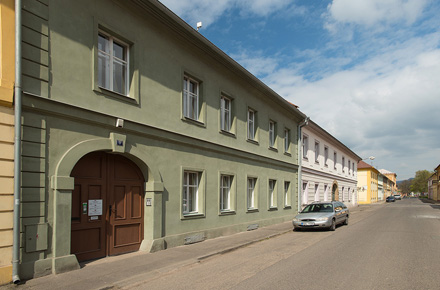
Just off the courtyard of this building, Artur Berliger, who came to Terezín in September 1942, created a secret synagogue. The original inscriptions in Hebrew can still be seen today. Above the synagogue, is a so-called “Mancarda” — an attic where five men lived.
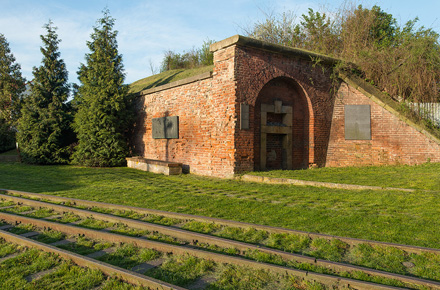
Between 1942-1943 the Nazis constructed a branch railroad line to the Terezín ghetto using the ghetto’s Jewish inmates as labor.
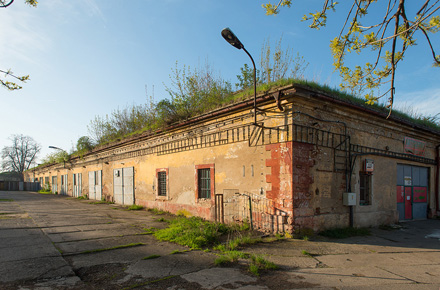
The Jäger Barracks were a quarantine area and a dormitory for elderly prisoners.
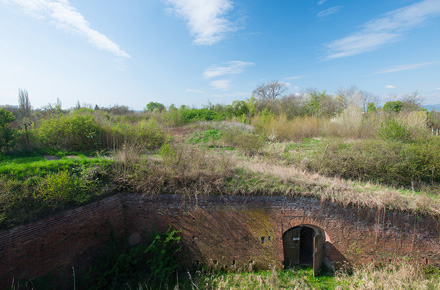
Südberg was the sports area for adults and children. It was built in 1943.
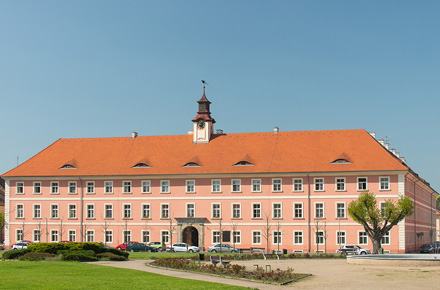
The Engineering Barracks were used for elderly prisoners and as a hospital for urological, neurological and cardiac diseases, as well as tuberculosis.
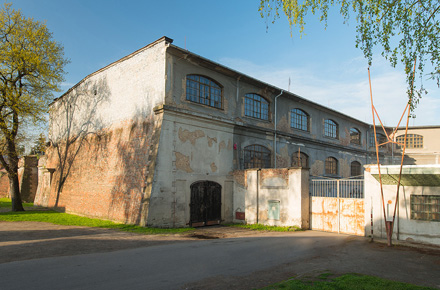
The Sudeten Barracks is where the first transport arrived on November 24, 1941. It was a so-called ‘Construction Unit’ consisting of 342 young men. In July 1943, six thousand men had to move out because the building was used to store RSHA (Reich Security Main Office) archives away from the Allied bombing raids in Berlin.
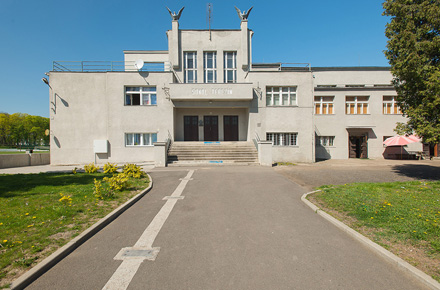
The Sokol Building, a former Sokol gym, was used to house children with encephalitis. For the Red Cross visit it was changed into a community center for music and theater performances, and included a library, prayer room and relaxation area on the terrace.

No content available for now.


